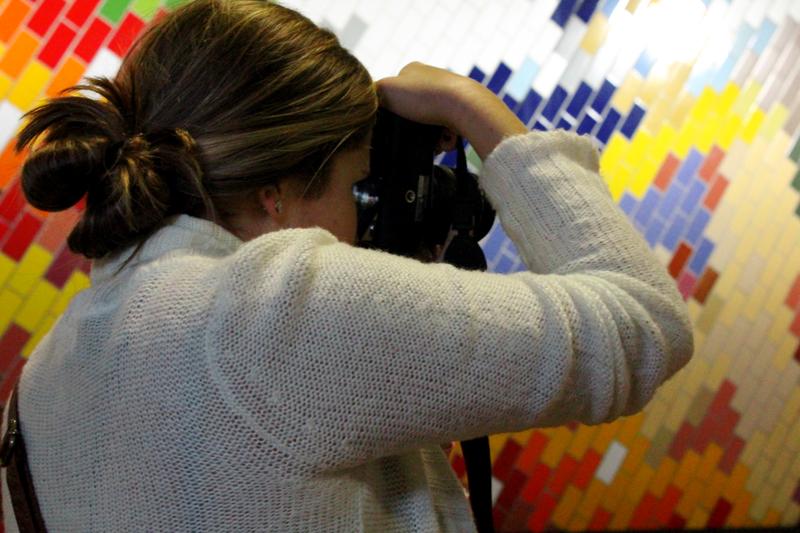PHILADELPHIA – Looking through the portal of my viewfinder, trying to frame my picture to perfection as the biting wind strikes my face, I press the shutter release button. I scurry to catch up with my peers, keeping my eyes peeled for potential snapshots. Falling behind, I pick up my pace to a slight jog, finally becoming a part of the group. This is street photography. Finding that decisive moment, releasing the shutter so fast my brain doesn’t catch up until the photo is taken at a speed of 1/250th of a second. All this speedy Philadelphian photography is what welcomed North Penn’s Digital Photography 3 class as we stepped off the train on Tuesday morning.
Nine seniors and two advisors, Mrs. Joanne Carrick and her mother, traveled to Old City, Philadelphia for an adventurous field trip on Tuesday, October 22nd. After boarding the train at 8:16am, my friends and I arrived at the Constitution Center to watch the Freedom Rising performance, which included an interactive speech reviewing the United States of America’s most historical events. After the short presentation, we headed downstairs for the riveting Pulitzer Prize exhibit, showcasing a gamut of documentary photos from the early 1940s.
“As photographers, we saw how powerful [photography] could be, because the way we do it in class we never really get to see things that change the world. We live in Lansdale, nothing happens here, and maybe that’s a good thing after seeing a lot of things in the exhibit. To see, really what photography is for, it was really enlightening,” student Daphne Kortis commented on the Pulitzer Prize exhibition.
As I walked through the exhibit looking at each photo, my passion for photography enhanced. Not only did I experience influential works, I was looking back in time. Each photograph was a time capsule of a significant historical event. Many visuals were so heart wrenching, I couldn’t look at the photo, fearing I would break down. I never thought that a photograph would bring me to tears. I was wrong.
“What we did with the photo field trip, it wasn’t only looking at photography but it was making connections to history, and photographs as historical records, plus the written facts of what happened during different events. So hopefully what you’re learning in your history classes you got to actually see in some of the visuals that we saw at the National Constitution Center,” explained Carrick.
After an emotional morning, our group dedicated a few minutes for a lunch break before heading out to walk the streets of Old City for some street photography. After looking at all the award winning photos, we were all motivated to take some great snapshots. Our time frame was cut short for our shooting assignment, but because of the limit, quick action shots were put into perspective. The application aspect of the field trip made me realize how fast the process of just clicking the shutter button really goes by while on the street.
“I think just nonstop shooting, and not constantly worrying about making every little thing perfect, because in real life nothing it that perfect, you just have to shoot the picture. It’s better to take more than to take less, which is what I learned on the field trip,” Kortis stated.
Although I wish our class had more time to take photos, the swift pace of the field trip helped my mind adapt to the idea of street photography. Seeing the printed visuals in front of me, enhanced the enjoyment factor why photographers do what they do. Every lesson that was taught in the classroom, both history and photography, was applied. Learning a concept is one thing, applying that concept is the challenge.


